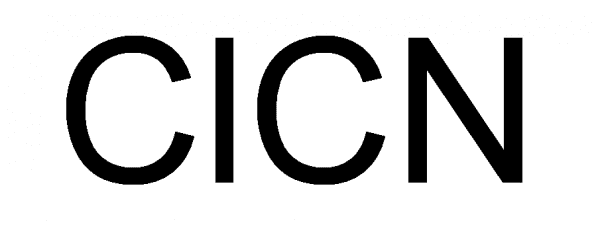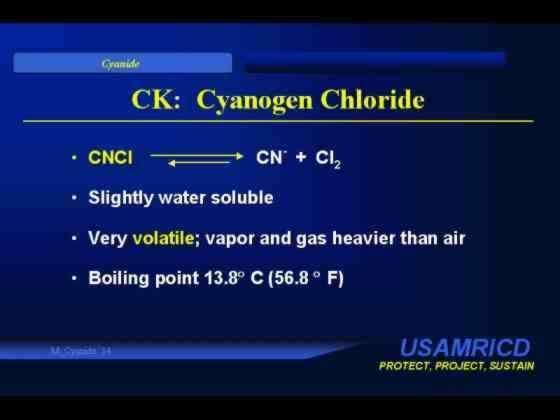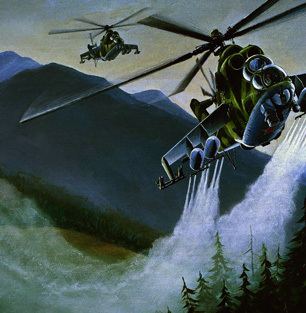Abbreviations CK Formula CNCl Density 1.19 g/cm³ | Appearance Colorless gas Molar mass 61.46 g/mol Boiling point 13 °C | |
 | ||
Related alkanenitriles | ||
Cyanogen chloride is a chemical compound with the formula NCCl. This linear, triatomic pseudohalogen is an easily condensed colorless gas. More commonly encountered in the laboratory is the related compound cyanogen bromide, a room-temperature solid that is widely used in biochemical analysis and preparation.
Contents

Synthesis, basic properties, structure

Cyanogen chloride is a molecule with the connectivity ClCN. Carbon and chlorine are linked by a single bond, and carbon and nitrogen by a triple bond. It is a linear molecule, as are the related cyanogen halides (NCF, NCBr, NCI). Cyanogen chloride is produced by the oxidation of sodium cyanide with chlorine. This reaction proceeds via the intermediate cyanogen ((CN)2).
NaCN + Cl2 → ClCN + NaClThe compound trimerizes in the presence of acid to the heterocycle called cyanuric chloride.
Cyanogen chloride is slowly hydrolyzed by water to release cyanate and chloride ions
ClCN + H2O → NCO− + Cl− + 2H+at neutral pHApplications in synthesis
Cyanogen chloride is a precursor to the sulfonyl cyanides and chlorosulfonyl isocyanate, a useful reagent in organic synthesis.
Safety

Also known as CK, cyanogen chloride is a highly toxic blood agent, and was once proposed for use in chemical warfare. It causes immediate injury upon contact with the eyes or respiratory organs. Symptoms of exposure may include drowsiness, rhinorrhea (runny nose), sore throat, coughing, confusion, nausea, vomiting, edema, loss of consciousness, convulsions, paralysis, and death. It is especially dangerous because it is capable of penetrating the filters in gas masks, according to U.S. analysts. CK is unstable due to polymerization, sometimes with explosive violence.

Cyanogen chloride is listed in schedule 3 of the Chemical Weapons Convention: all production must be reported to the OPCW.

